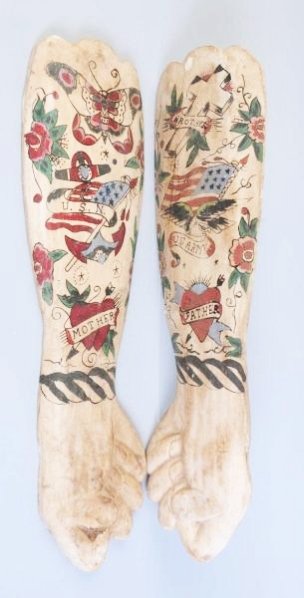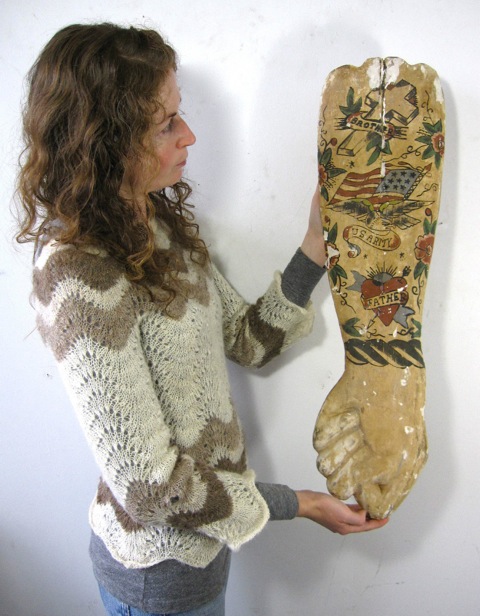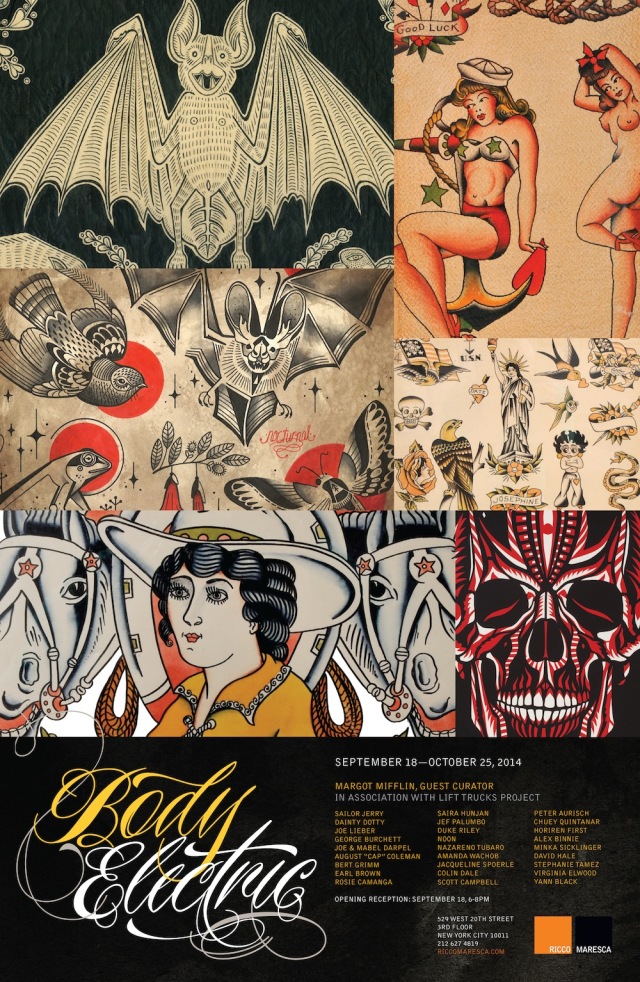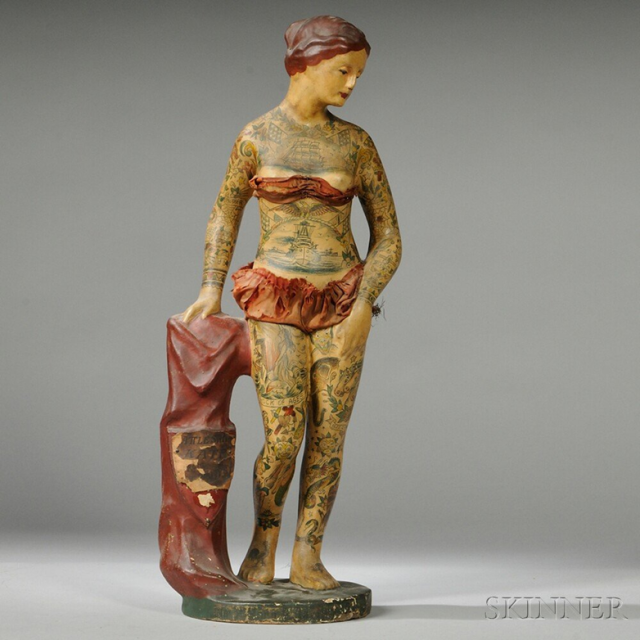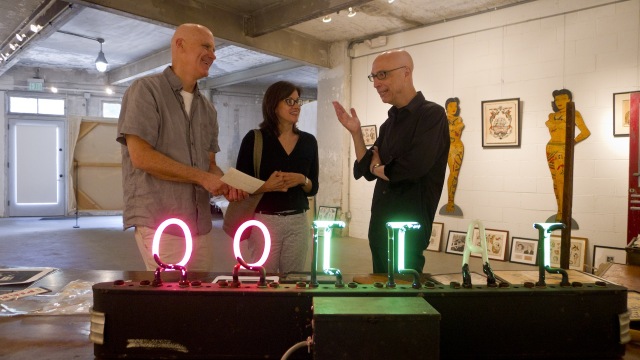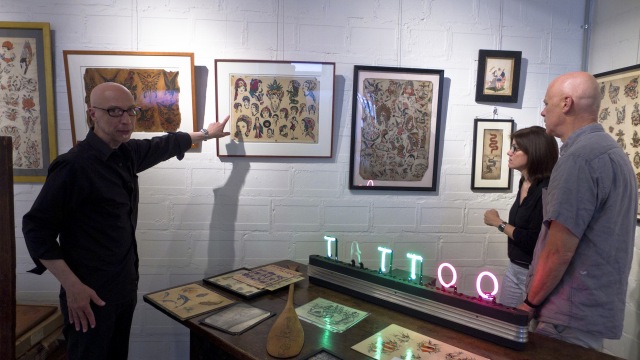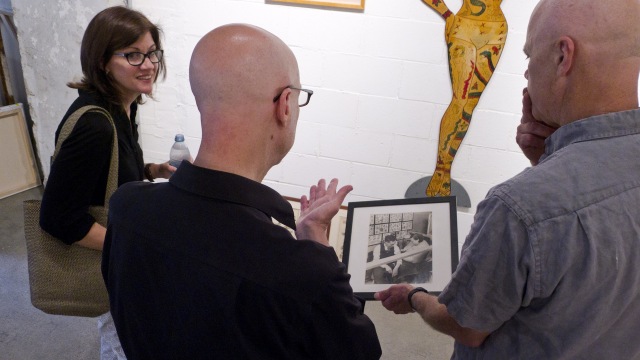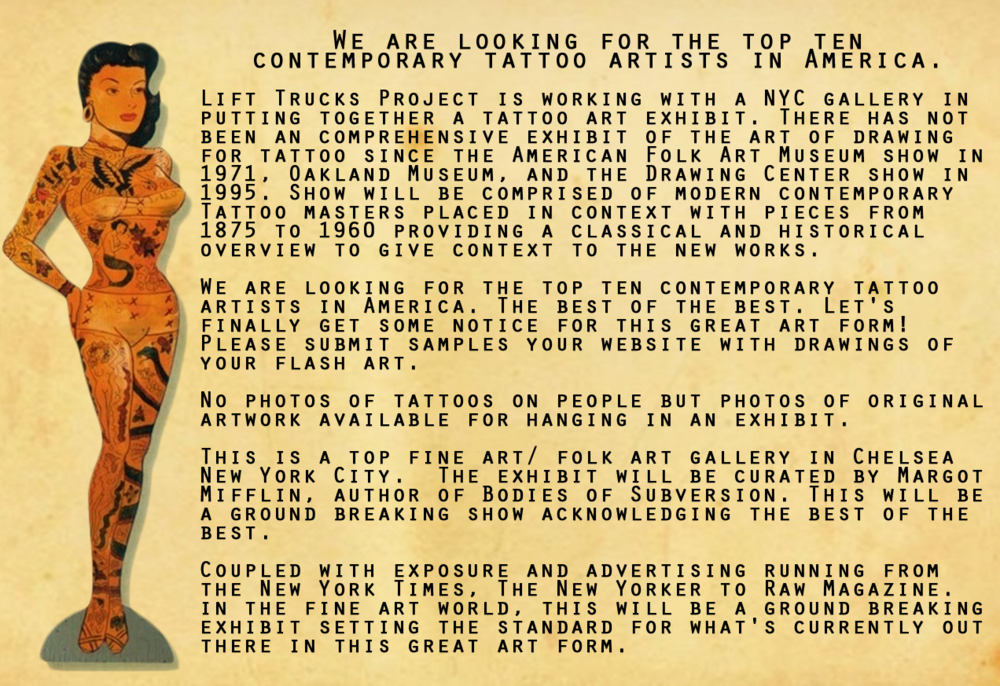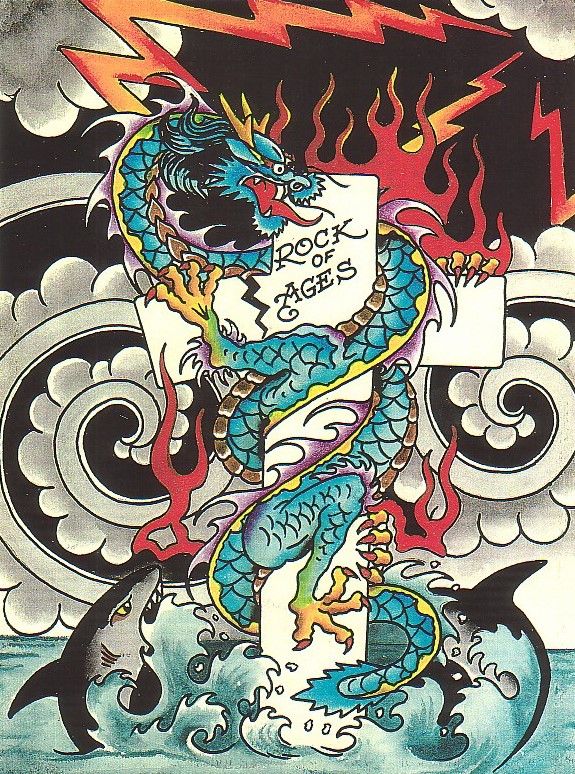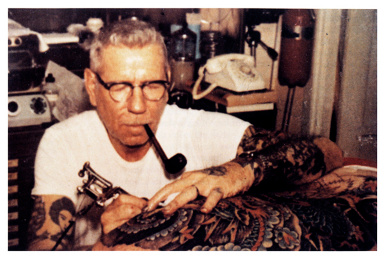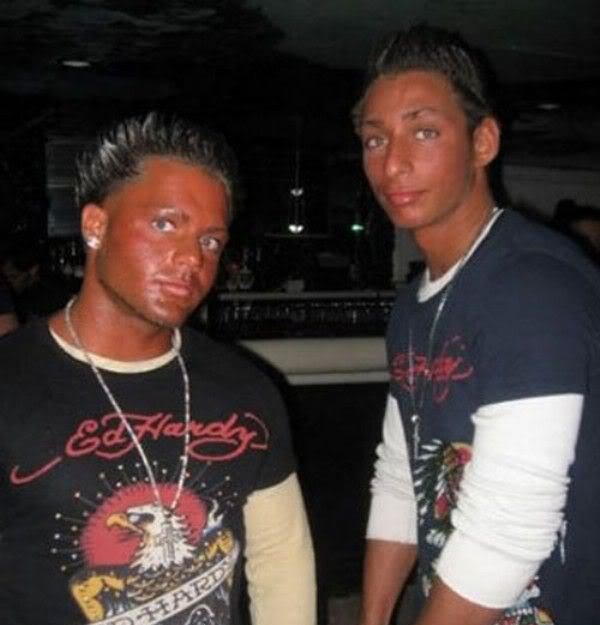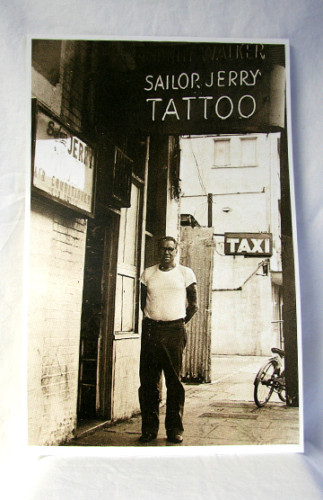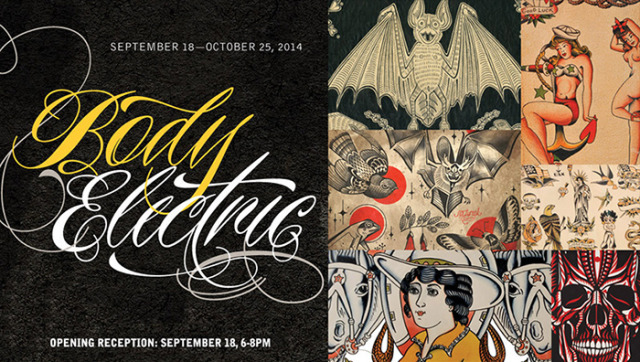
Saira Hunjan | Jef Palumbo | Duke Riley | Noon | Nazareno Tubaro | Amanda Wachob | Jacqueline Spoerle | Colin Dale | Scott Campbell | Peter Aurisch | Chuey Quintanar | Horiren First | Alex Binnie | Minka Sicklinger | David Hale | Stephanie Tamez | Virginia Elwood | Yann Black
Bound to a limited visual lexicon for over a century, tattooing has sprung free in the new millennium, liberated by artists who combine fresh concepts, holistic design, and masterful technique in thrillingly original styles. They draw inspiration from historical genres spanning Pointillism, Expressionism, Pop Art, and Photorealism; from an array of timeless ethnographic traditions; from illustration and graphic design, comics and street art; from regional folk arts; and from the Japanese style that has informed Western tattooing for the past century. The artists presented in “Body Electric” confirm that tattooing has turned a corner into an entirely new realm of artistic possibility. They are auteurs of body art.
“Body Electric” introduces a new generation of conceptual trailblazers. The visual art featured here reflects their tattoo sensibility—the next best thing to showcasing the living canvases that bear their designs. They hail from around the globe: In Lucerne, for example, Jacqueline Spoerle uses Swiss folk motifs in lyrical silhouettes perfectly suited to tattoo’s inherently graphical nature. In Los Angeles, Chuey Quintanar takes fine line black and grey portraiture to a new level of grace and power. New Yorker Duke Riley’s maritime narratives betray a blush of nostalgia through strong line work and meticulous cross-hatching. In Argentina, Nazareno Tubaro blends tribal, Op Art, and geometric patterns in flowing compositions that embrace and complement human musculature. And in Athens, Georgia, David Hale, a relative newcomer, folds the curvilinear lines of Haida art into his folk-inflected nature drawings.
The exhibition includes a selection of flash art spanning the late 19th to mid-20th century. These pieces, many by titans of the trade--George Burchett and Sailor Jerry Collins among them--represent the keystone style of Western tattoo tradition and the semiotic conventions that define it, from hearts and anchors to pinups and crucifixes. Conveying both the charms and limits of these pioneers, they offer a baseline for understanding the evolution of tattooing over the course of the past century.
By bringing visual sophistication and art historical engagement to their work, the new auteurs have freed tattooing from the subcultural parameters that both sustained and restricted it for over a century. They’ve opened the door to an exhilarating new pluralism, reimagining this art for the 21st century.
*Excerpted from “Visionary Tattoo,” an essay by Margot Mifflin, Guest Curator
See more here
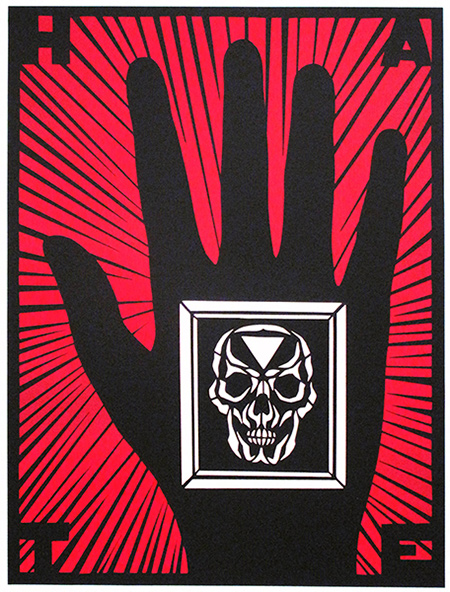 Alex Binnie
Alex Binnie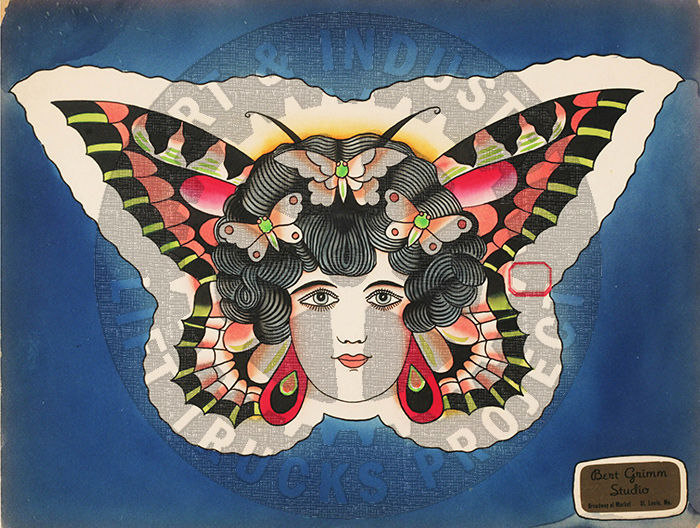 Bert Grimm
Bert Grimm
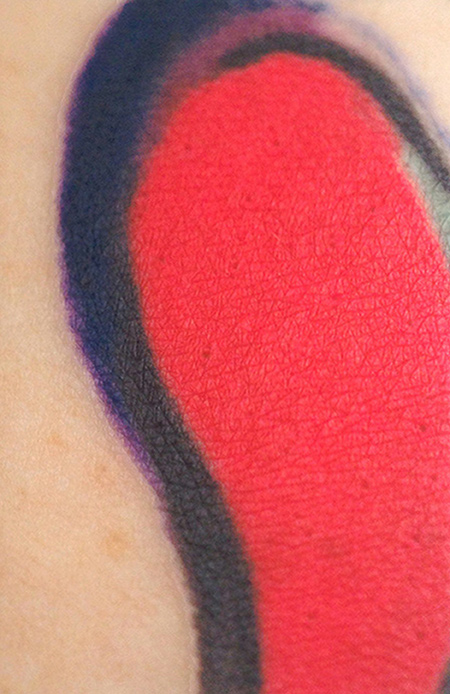 Amanda Wachob Avital
Amanda Wachob Avital
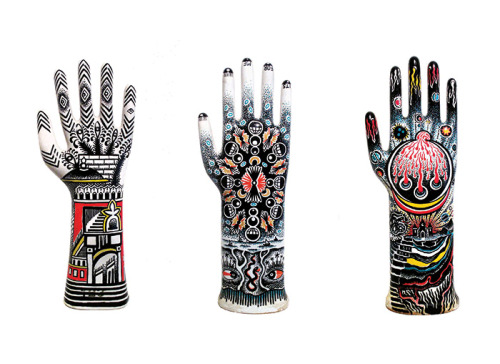 Virginia Elwood
Virginia Elwood
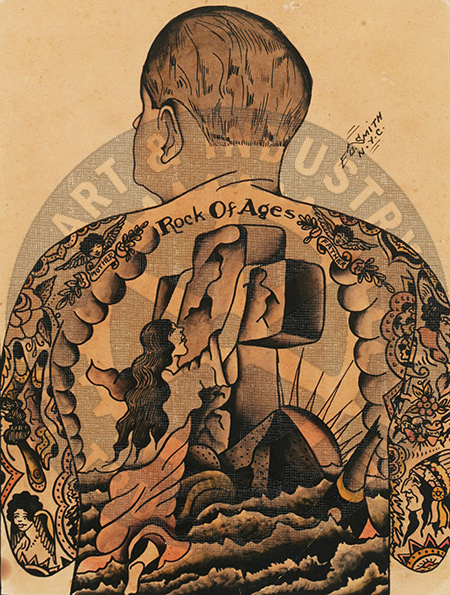 Ed Smith
Ed Smith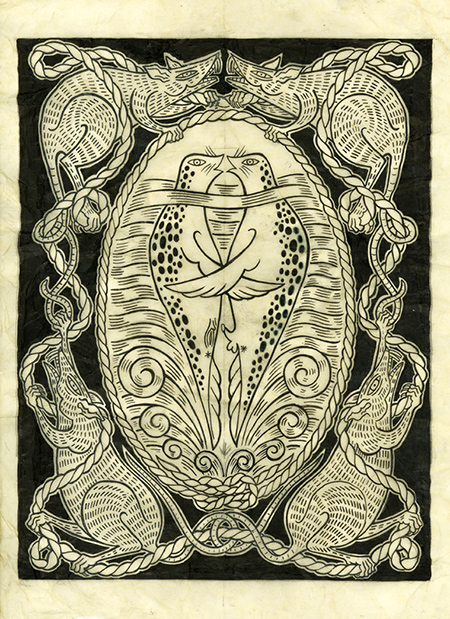 Duke Riley Swinburn
Duke Riley Swinburn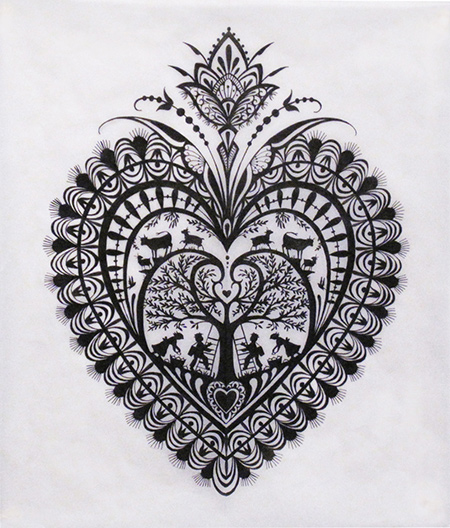 Jacqueline Spoerle
Jacqueline Spoerle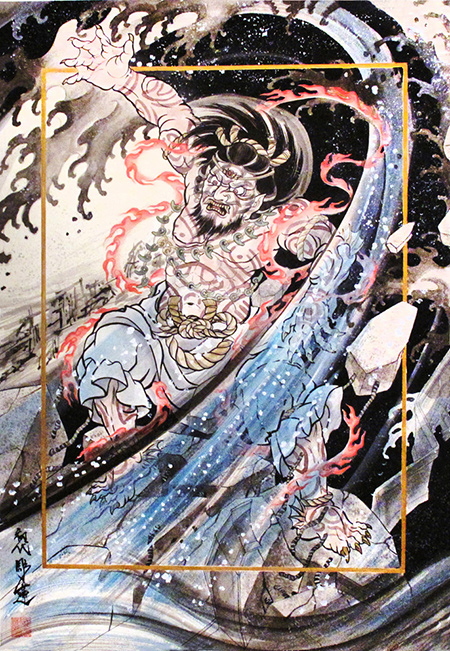 Horiren First
Horiren First




 Sailor Jerry.
Sailor Jerry.









